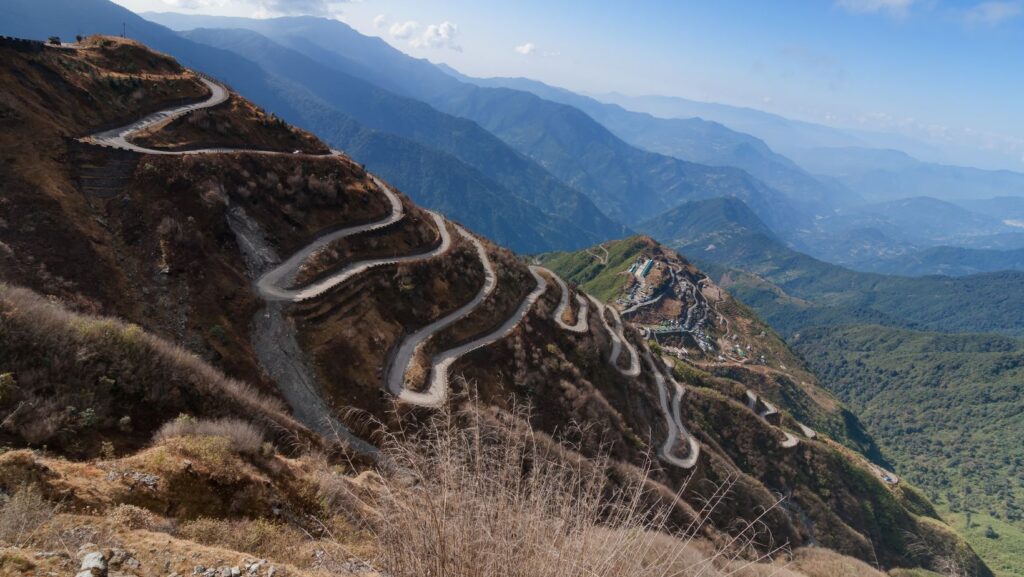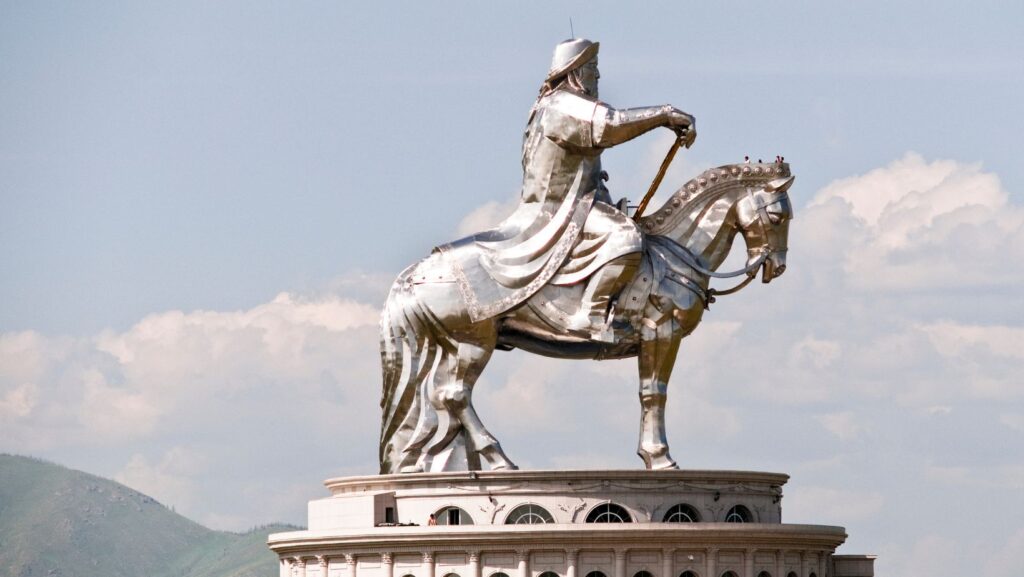by Emily Glankler
The AP World curriculum continues to be mystifyingly metaphorical as it moves from the “Global Tapestry” to “Networks of Exchange” (while staying in the same time period: 1200 – 1450.)
Why does each era now have two separate units?

One of the biggest changes from the “old” AP World course to the “Modern” one is that went from having six historical eras organized in six units. Sure, some of those units were massive and overwhelming, but the periodization of it all was fairly simple. Now we have essentially four historical eras divided into nine units. This, reasonably, can be quite confusing for students and teachers alike. It seems that the College Board is walking a tightrope between traditional chronological history and a more holistic, thematic approach. While each unit is situated within a chronological era (and some later units, like Unit 7, take on a more straightforward timeline approach,) in general the AP World: Modern course is more concerned with major historical developments that span multiple regions and speak to bigger changes (and continuities) over time. By breaking each historical era into two (or more) units, teachers are able to focus in on the main themes of each unit and, hopefully, get students to start making more meaningful connections across history instead of just plodding forward on the never-ending timeline.
With this interpretation…
How should we approach the content of Unit 2?

Unit 2 is really the first “test” of the College Board’s more nuanced approach to AP World History. Besides the confusingly placed Topic 2.2 on the Mongols, the other six topics shift from geographically organized (2.1 Silk Road, 2.3 Indian Ocean, 2.4 Trans-Saharan Trade) to entirely thematic (2.5-2.7 “Consequences of Connectivity.”) This unit is not one that needs to be approached in order (Day 1 covers 2.1, Day 2 covers 2.2, etc.) but can actually be viewed holistically as a broader discussion about the consequences of increasing interaction between regions.
In my own class, we spend one day mapping and discussing the three major Afro-Eurasian trade routes and another day or two on the Mongols. Then, Unit 2 is the perfect opportunity, early in the school year, to dive into a group project or similarly engaging multi-day activity. Whether it’s playing a game simulating the trade networks or assigning groups to be on the Tourism Board of various trading cities*, the second half of Unit 2 is ideal for getting kids out of their desks and into more creative activities. The general ideas of Unit 2 are not overly complicated (trade routes spread other things besides goods and money) but it’s a great opportunity to get kids practicing the art of historical reasoning.
*You can access the full lesson plan for Emily’s Trading City Tourism Project through her Patreon.
How does Unit 2 build on Unit 1?

As mentioned in my previous article, I simplify the “Global Tapestry” down to two essential questions:
- How did key states gain and maintain power in the region?
- How did they promote unity and stability within their state?
With this in mind, Unit 2 just adds one more essential question to the mix:
- How did various states and groups interact with each other?
While I focused mostly on “big states” and SPICE-T themes in Unit 1, Unit 2 is an opportunity to focus on specific trading cities, groups, and even individual travelers. If students can visualize the “Global Tapestry,” now it should be simple for them to add some illustrative examples on top of it that breathe life into the “birds eye view” from Unit 1. (For example, now that they are familiar with the Song Dynasty and the island states of Southeast Asia, we can “zoom in” on a place like Malacca to see how it disrupted the bigger states. Or the overly generalized discussion of “West Africa” in Unit 1 can now spend an entire day on Mansa Musa.)
If it’s all the same era, should we just combine Units 1 and 2 together?

Short answer: sure!
Unit 1 focuses on the states from 1200 to 1450 while Unit 2 explores the networks of exchange and interactions within that same era. For example, students learn about the states under Dar al-Islam in Unit 1 and then go back and look at the spread of Islam as part of cultural diffusion in Unit 2. This can be confusing for students who assume that when we move from one unit to the next we are also moving forward chronologically.
Because of this, many teachers, myself included, combine Units 1 and 2 in some way. In my classroom, I don’t have a big unit exam until we are through Unit 2 (I had a smaller test “check in” after Unit 1 to make sure we were on track.) Depending on your textbook, you could just weave the topics of Unit 2 into your teaching of Unit 1. (For example, after you teach 1.1 East Asia and 1.2 Dar al-Islam, shift over and look at the Silk Road (2.1), etc.) Personally, this seems unnecessary as long as you are very clear with students that all of the content from Units 1-2 is within the same years of 1200 to 1450. This is also a good practice for future eras that are also divided into two units (Units 3-4: 1450-1750 C.E.; Units 5-6: 1750-1900 C.E.)
Whatever you do with these two units, it’s safe to assume you don’t need to give them each equal time. If you spent weeks on Unit 1 and feel confident your students got that material down, then you should breeze through Unit 2 as an “epilogue” and then move on. Conversely, if you ended Unit 1 feeling like students hadn’t quite grasped the “Global Tapestry” of it all, instead of re-teaching the entire first unit, just add some more time to Unit 2 to review and revisit those states.
What do I do with the Mongols?

That’s the ultimate question, isn’t it? The Mongols are clearly important to the AP World course – I mean, they get their own Topic in the CED! But, to be honest, it’s far less important for students to know all the gory details about Genghis Khan and the Mongol conquests than it is for them to understand the impact of the Mongol Empire on Afro-Eurasia. For AP World, the Mongols are a conduit that takes us from the late Medieval Era into the Modern Age.
You should still feel free to spend a day discussing the “barbaric” nature of the Mongol military, if you want. Students love it. But for the AP Exam, it’s more likely that they’ll be asked questions about how the Mongols interacted with other civilizations after they conquered them (in 2020 there was an entire DBQ about Mongol assimilation into local culture) or about the extent to which the Mongols brought on a new era in world history (like the first SAQ on the 2022 exam.) If you’re a teacher who enjoys reading in your spare 5-10 minutes each day, I highly recommend Jack Weatherford’s Genghis Khan and the Making of the Modern World. Even just the introduction is so powerful I often assign those first few pages as a rare non-textbook reading for my students.
I still don’t quite understand “Networks of Exchange” What other resources are out there to help me get through Unit 2?
You are not alone. Many experienced teachers have a hard time figuring out how to tackle this unit, so much so that I made an entire YouTube video walking teachers through my approach to Unit 2:
Here are some of my other favorite tried-and-true resources for Unit 2.
YouTube Reviews
- “WHAP Unit 2: Networks of Exchange” (Anti-Social Studies)
- “AP World History Unit 2 Playlist” (Heimler’s History)
- “AP World History Modern: Unit 2 Review” (Stephanie Gorges)
- “2.1 Deep Dive: Paper Money, Banking Houses, and Bills of Exchange” (Anti-Social Studies)
- “2.2 Deep Dive: Malacca” (Anti-Social Studies)
Unit 1 Lesson Plans and Resources
- Silk Road Trading Card Game (Emily Glankler x Marco Learning)
- The Mongol Empire (Marco Learning)
- Files: Lesson Plan, Teacher Commentary, Student Handout, Homework
- Networks of Exchange (Freeman-Pedia)

Emily Glankler has taught almost every Social Studies course for the past decade from 6th grade World Cultures through AP® U.S. History but her favorite course to teach is AP® World History. She has taught AP® History courses at both private and public high schools in Austin, Texas and she was the team lead responsible for bringing AP® World (and building the curriculum from scratch) to the last two high schools where she has taught. Emily has also led professional development within Austin ISD as an Instructional Coach as well as presenting to an audience at SXSW EDU about incorporating current events into the core curriculum. She has a B.A. in History from the University of North Carolina at Chapel Hill and an M.A. in History from Texas State University. In addition to teaching full time, Emily also writes and produces a history podcast called Anti-Social Studies that is used by teachers and students in history classrooms around the country.
 Help
Help